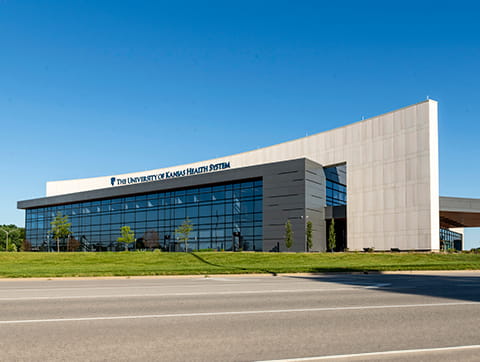Rhinoplasty
Nose surgery, or rhinoplasty, is designed to improve the shape, size and overall appearance of the nose with the goal of achieving enhanced facial balance. Rhinoplasty is one of the most difficult surgical procedures to perform. The delicate framework of the nose must be manipulated in a manner that not only produces ideal short-term results, but a final outcome that will last long-term.
At The University of Kansas Health System, our facial plastic surgeons, plastic surgeons and otolaryngologists excel in nose surgery. From primary rhinoplasty to complex secondary or revision rhinoplasty procedures, our surgeons have the advanced skill and expertise to achieve outstanding results for those seeking cosmetic and/or functional enhancement of their nose.
What is nose surgery?
Also known as rhinoplasty or a "nose job," nose surgery modifies the nasal shape and proportions to bring the nose into harmony with other facial features. Desired changes are often subtle, yet many people notice that their self-esteem is dramatically improved after rhinoplasty surgery. While many rhinoplasty surgeries are performed for cosmetic purposes, rhinoplasty can also correct functional breathing problems and deformities created by previous nasal fractures or genetics.
In addition to cosmetic rhinoplasty, our specialized team is skilled in multiple types of nose surgery:
In some cases, your surgeon may recommend combining nose job surgery with additional procedures, such as cheek or chin implants, to further enhance your results.
We offer a variety of appointment types. Learn more or call 913-588-1227 to schedule now.
Who can have nose surgery?
People who choose to have rhinoplasty often find that nose reshaping surgery, which brings symmetry to the face, also improves their quality of life and self-confidence. Rhinoplasty can be performed to correct a range of nose-size issues, from a nose that is too large to a nose that is bumpy, crooked or drooped, in addition to correcting some breathing problems.
How does nose surgery work?
Rhinoplasty can be performed for cosmetic reasons, to bring the nose into proportion with the face or for functional reasons to address breathing problems.
There are generally 2 techniques to perform rhinoplasty:
Benefits and risks of nose surgery
Rhinoplasty can accomplish the following improvements to the size, shape and function of the nose:
- Change the angle of the nose
- Enhance definition and structure
- Improve breathing
- Refine the nasal tip
- Revise the size or shape of the nostrils
- Smooth a hump or dip
- Straighten or narrow the bridge
A few of the risks associated with rhinoplasty include the same risks that can occur with any surgery, such as infection or scarring. Your surgeon will go over the benefits and risks of nose surgery in more detail during your consultation.
What happens during nose surgery?
The rhinoplasty procedure takes between 1-3 hours to perform and is generally performed under a local anesthesia with an intravenous sedation. If your plastic surgeon chooses a closed rhinoplasty, the incisions will be made inside your nose. With an open procedure, the incision will be made under the tip of your nose, where the skin can be lifted for a view of the nasal structure.
After your surgeon has made the chosen incision, your nasal bone and cartilage will be reshaped to bring the nose into balance. Sutures will be placed inside your nose and packing may be inserted to control bleeding.
After surgery, a protective splint is applied to the nose and remains in place for 1 week. Bruising and swelling around the nose and eyes is very common and usually improves over the first couple of weeks of recovery. Some people experience minor swelling that can persist for up to a year, depending on their skin type. Discomfort is generally mild and easily treated with medication. Within about a week after surgery, your surgeon will remove stitches and the protective splint. Most people return to work within 5-7 days.







